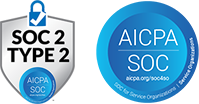What Is Employee Experience?
Employee Experience is the holistic journey of an employee—from recruitment and onboarding through daily work, career development, and offboarding. It includes physical workspace, digital tools, culture, leadership interactions, and growth opportunities. Each touchpoint shapes engagement, well-being, and productivity.
Why Employee Experience Matters
A strong Employee Experience drives higher engagement, lowers turnover, and fuels productivity. Engaged employees deliver better customer service, innovate more freely, and become advocates for your brand. By measuring and improving experience, organizations safeguard talent, strengthen culture, and boost business outcomes.
Where Employee Experience Is Used
- Onboarding: First impressions via orientation, training, and mentor support.
- Daily Work: Access to user-friendly systems, ergonomic environments, and collaborative tools.
- Career Development: Clear pathways, skill-building programs, and feedback channels.
- Recognition & Rewards: Timely acknowledgment of achievements and fair compensation.
- Offboarding: Exit interviews, knowledge transfer processes, and alumni engagement.
Employee Experience Key Benefits
- Enhanced Engagement: Satisfied employees are 2.3× more likely to exceed performance goals.
- Reduced Turnover: Positive experiences cut attrition by up to 25%.
- Talent Attraction: Strong employer brand draws top candidates.
- Innovation Boost: Inclusive, supportive environments spark creativity.
- Operational Efficiency: Streamlined processes free time for strategic work.
Best Practices & Examples
- Experience Surveys: Use pulse surveys and sentiment analysis to pinpoint friction—one tech firm improved onboarding satisfaction by 30% after monthly check-ins.
- Personalized Journeys: Leverage People Analytics to tailor learning and benefits recommendations based on role and tenure.
- Cross-Functional Forums: Host regular “voice of employee” panels to co-create solutions with HR, IT, and leadership.
- Recognition Platforms: Implement peer-to-peer kudos systems integrated into daily workflows.
- Continuous Feedback: Embed real-time feedback channels in collaboration tools to surface issues and ideas immediately.
Conclusion
Optimizing Employee Experience transforms work into a strategic advantage. By mapping every touchpoint, gathering real-time insights, and embedding continuous improvement loops, organizations cultivate a culture of engagement, retention, and innovation—fuelling sustainable growth and a motivated workforce.
Employee Experience FAQs
Q: What is meant by employee experience?
Employee Experience is the sum of all interactions and perceptions employees form—from recruitment and onboarding to daily work, development, recognition, and exit processes—that influence engagement and performance.
Q: What are the 7 stages of employee experience?
The seven stages are: (1) Attraction; (2) Recruitment; (3) Onboarding; (4) Development; (5) Retention; (6) Offboarding; (7) Alumni engagement—each requiring tailored actions to optimize satisfaction and productivity.
Q: How would you describe your employee experience?
Describe your Employee Experience by reflecting on the clarity of communication, quality of tools and support, growth opportunities, recognition frequency, and fairness in policies—from your first day to your last.
Q: What are the three pillars of employee experience?
The three pillars are: (1) Culture & Leadership—trust, values, and management style; (2) Physical & Digital Environment—workspaces and technology; (3) Growth & Well-Being—learning pathways, health support, and work-life balance.




